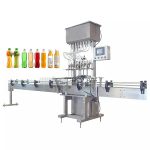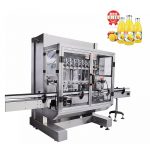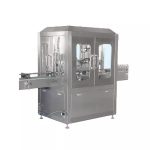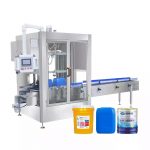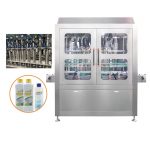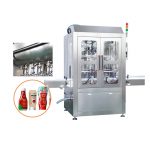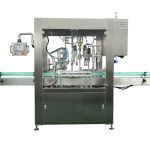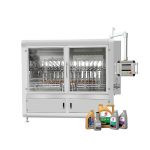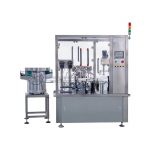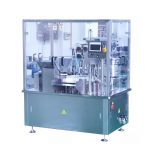A ghee filling machine is a specialized type of packaging equipment that is designed to accurately and efficiently fill containers with ghee, a type of clarified butter that is popular in many parts of the world, particularly in India and the Middle East. Ghee is used as a cooking oil and is also used in traditional medicine and as a beauty product. It has a high smoke point and a rich, nutty flavor, making it a versatile ingredient in many dishes.
If you are in the food processing industry and produce ghee, you know how important it is to have a reliable ghee filling machine to ensure that your products are consistently and accurately filled. In this ultimate guide, we will cover everything you need to know about ghee filling machines, including how they work, the different types available, and how to choose the right one for your business.
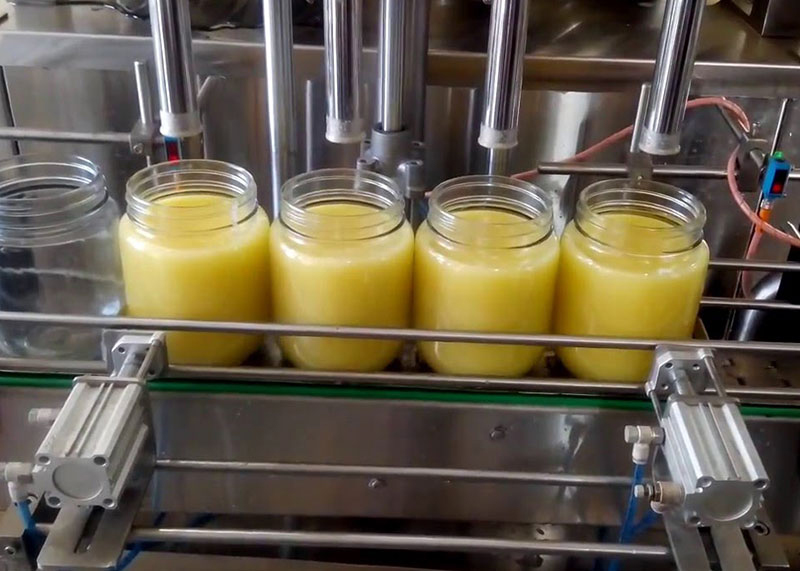
How do ghee filling machines work?
Ghee filling machines operate using a variety of different filling methods, depending on the specific design and model. Some common filling methods include:
- Gravity filling: In this method, the ghee is poured into the filling machine from a container and is then dispensed into the packaging containers using the force of gravity. This method is simple and cost-effective, but it may not be suitable for all types of ghee, particularly those with a thick or viscous consistency.
- Piston filling: This method uses a piston to dispense the ghee into the packaging containers. The ghee is placed in a chamber and the piston is used to push it out and fill the containers. This method is more accurate and precise than gravity filling and is suitable for a wide range of ghee viscosities.
- Volumetric filling: Volumetric filling involves filling the containers with a predetermined volume of ghee using a measured volume cup or other device. This method is very accurate and is often used for ghee that needs to be filled to a specific weight or volume.
Types of ghee filling machines
There are several different types of ghee filling machines available on the market, each with its own unique features and capabilities. Some common types include:
- Semi-automatic ghee filling machines: These machines are designed for smaller-scale operations and require manual intervention for some steps in the filling process. They are typically less expensive than fully automatic machines and are suitable for businesses with lower production volumes.
- Fully automatic ghee filling machines: These machines are designed for high-volume production and can fill and seal containers without the need for manual intervention. They are more expensive than semi-automatic machines but are more efficient and accurate, making them a good choice for large-scale operations.
- Rotary ghee filling machines: These machines are designed to fill and seal containers on a rotating platform. They are suitable for high-volume production and can handle a wide range of container sizes and shapes.
- Inline ghee filling machines: These machines are designed to be integrated into a production line and can fill and seal containers as they move through the line. They are suitable for high-volume production and can handle a wide range of container sizes and shapes.
Factors to consider when choosing a ghee filling machine
When choosing a ghee filling machine for your business, there are several key factors to consider:
- Production capacity: Consider the amount of ghee that you need to produce on a daily or weekly basis. This will help you determine the size and capacity of the ghee filling machine you need.
- Container size and shape: Ghee filling machines are designed to work with specific container sizes and shapes. Consider the size and shape of the containers you will be using, and choose a machine that is compatible.
- Filling accuracy: Ghee filling machines use various methods to fill containers accurately, such as gravity filling, piston filling, and volumetric filling. Consider the level of accuracy you need and choose a machine that uses the appropriate filling method.
- Speed and efficiency: Ghee filling machines come in a range of speeds and efficiency levels. Consider the production demands of your business and choose a machine that can meet those demands.
- Maintenance and cleaning: Ghee filling machines require regular maintenance and cleaning to ensure they are functioning properly and producing high-quality products. Consider the maintenance and cleaning requirements of the machine you are considering, and choose one that is easy to maintain and clean.
- Cost: Ghee filling machines range in price from relatively inexpensive semi-automatic models to more expensive fully automatic models. Consider your budget and choose a machine that fits your needs and your budget.
Tips for using a ghee filling machine
Once you have chosen and purchased a ghee filling machine, there are a few tips to follow to ensure that it is used effectively and efficiently:
- Follow the manufacturer's instructions: Make sure to read and follow the manufacturer's instructions carefully to ensure that the machine is used correctly and safely.
- Regular maintenance and cleaning: Regular maintenance and cleaning is important to ensure that the ghee filling machine is functioning properly and producing high-quality products. Follow the manufacturer's recommended maintenance and cleaning schedule to keep the machine in good working order.
- Quality control: It is important to regularly check the quality of the ghee being filled to ensure that it meets your standards. Use appropriate quality control measures, such as visual inspection, to ensure that the ghee is free of contaminants and meets your quality standards.
- Safety: Ghee filling machines can be hazardous to operate if they are not used properly. Make sure to follow all safety precautions and guidelines to ensure the safety of your employees and your facility.
In conclusion, a ghee filling machine is a specialized piece of packaging equipment that is used to fill containers with ghee, a type of clarified butter that is popular in many parts of the world. There are several different types of ghee filling machines available, each with its own unique features and capabilities. When choosing a ghee filling machine, consider factors such as production capacity, container size and shape, filling accuracy, speed and efficiency, maintenance and cleaning requirements, and cost. Once you have purchased a ghee filling machine, follow the manufacturer's instructions, regularly maintain and clean it, perform quality control checks, and follow safety guidelines to ensure it is used effectively and efficiently.

